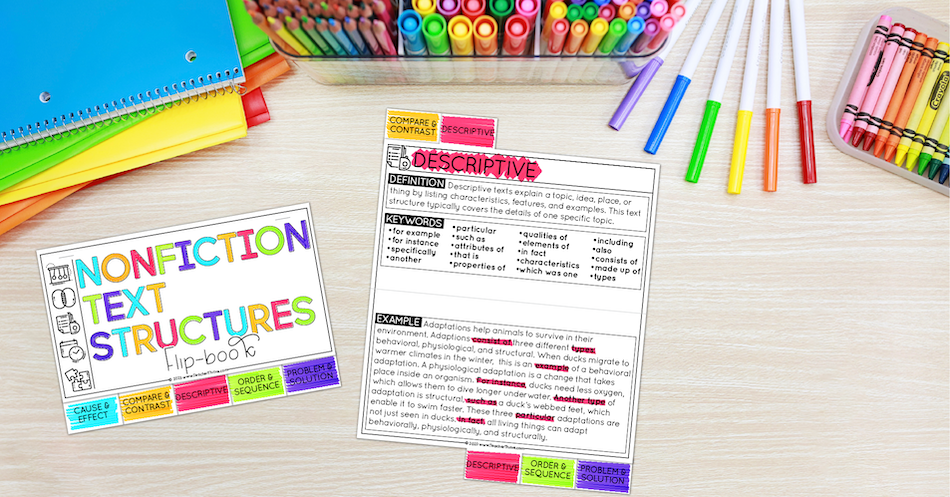Nonfiction text structures refer to how authors organize and present information in their writing. Understanding these structures can help students develop critical thinking skills, improve reading comprehension, and become better writers. This blog post will discuss the five types of nonfiction text structures.
- Cause and Effect: Cause and effect is a text structure that shows the relationship between two events or ideas. This structure presents a situation or event and then explains why it happened, or it presents a cause and then explains the resulting effects. This structure is used in science, history, and persuasive writing.
- Compare and Contrast: Books with a compare and contrast structure look at two or more things side-by-side and point out their similarities and differences. This type of book helps readers gain insight into both topics by looking at them together instead of separately. It is commonly used in literature, science, and social studies.
- Descriptive: Books with a descriptive structure describe something by listing its features, characteristics, or examples. These nonfiction books focus on one topic and provide detailed information about it. This structure can be found in content-area texts, such as science and social studies. However, it is also applies to fiction texts.
- Order and Sequence: Chronological order is one of the most common text structures, particularly in historical writing. In this structure, events or ideas are presented in the order in which they occurred or were developed. This structure is helpful for readers who want to understand the progression of events over time. It is commonly used in biographies, history books, and news articles.
- Problem and Solution: The problem and solution text structure presents a problem or issue and then offers one or more solutions to solve the problem. This structure is often used in persuasive writing, such as opinion pieces or essays. It is also common in more formal writing, where a problem is presented and solutions are offered.
Teaching students to recognize the different types of nonfiction text structures can help them become better readers, writers, and critical thinkers. By providing different strategies for identifying these structures, we can help students comprehend a text more efficiently, make connections between different pieces of information, and ultimately become more successful in their academic careers.
Looking for a good place to start? Grab my free Nonfiction Text Structure Flip-book below. This handy flip book is an excellent reference tool for students–it contains a simple definition, keywords, and example of each of the five text structures.









